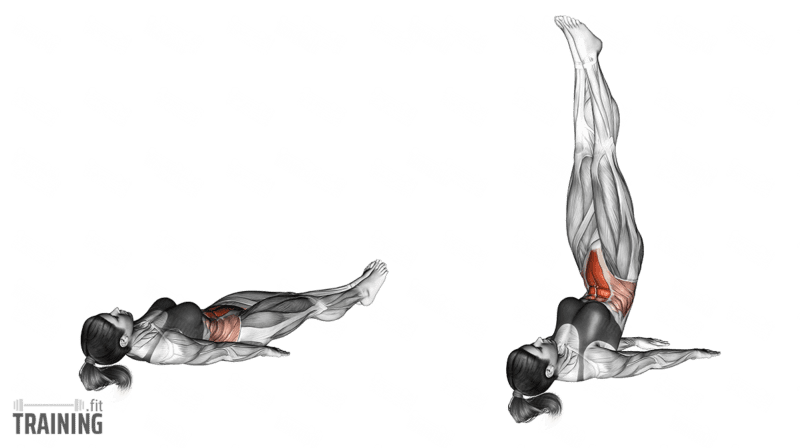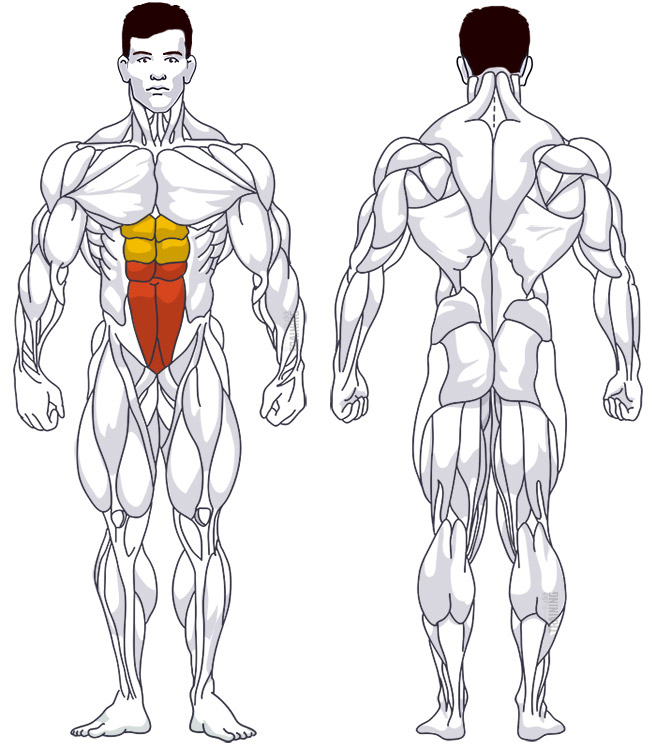Reverse Crunches
Isolation exercise, Body weightOverview

Main muscles
- Abdomen: Straight abdominal muscle
(Musculus rectus abdominis)
Reverse Crunches: Basics and alternatives

Involved main muscle groups:
Reverse Crunches
Reverse crunches primarily target the lower part of the abs. Unlike “normal” crunches, the movement is reversed. Instead of lifting your upper body, you move the lower half of your body, including your legs and hips: You lie on your back with your legs straight and lift your legs straight up, perpendicular to the ground.
Just like normal crunches, all you need is a sufficiently soft surface, making this exercise perfect for home workouts.
While reverse crunches activate the entire abdominal region (like other ab exercises), the focus is noticeably on the lower part of the abs.
Other exercises targeting the lower abs include knee raises, hanging knee raises, and scissor kicks for home workouts.
Correct Execution
There are many variations of reverse crunches, and opinions vary on the “real” exercise. The following describes a variation where the hips are lifted at the end of the crunch movement, allowing for optimal muscle focus.
You can modify reverse crunches, particularly with leg position. Straight leg training is more challenging, but if you struggle initially, bend your knees to make the exercise easier. Gradually straighten your legs over time to increase muscle stimulus.
If you experience lower back strain during the exercise, try placing your hands under your hips instead of pressing them to the ground beside your body. This typically relieves lower back pressure.
Video tutorial
Step-by-step instructions
- Lie on your back with your legs close together.
- Place your arms directly beside your hips and press your palms onto the ground.
- Lift your legs slightly off the ground so they’re no longer resting. You’re now in the starting position.
- Lift your straight legs fully at the hips so they form a 90-degree angle with your upper body. Slight knee bending during the movement is normal. When you reach the angle, lift your hips and straighten your legs upwards.
- In a controlled manner, lower your hips back down and bring your legs back to the starting position.
Common Mistakes
To achieve the best muscle stimulation, it’s important to perform the exercise within the described range of motion. Don’t be tempted to only do a small part of the movement because it’s easier. If you get used to incomplete execution, the training will be less effective. Even if it’s initially challenging, try to perform the exercise as cleanly as possible and take longer breaks between repetitions and sets if needed.